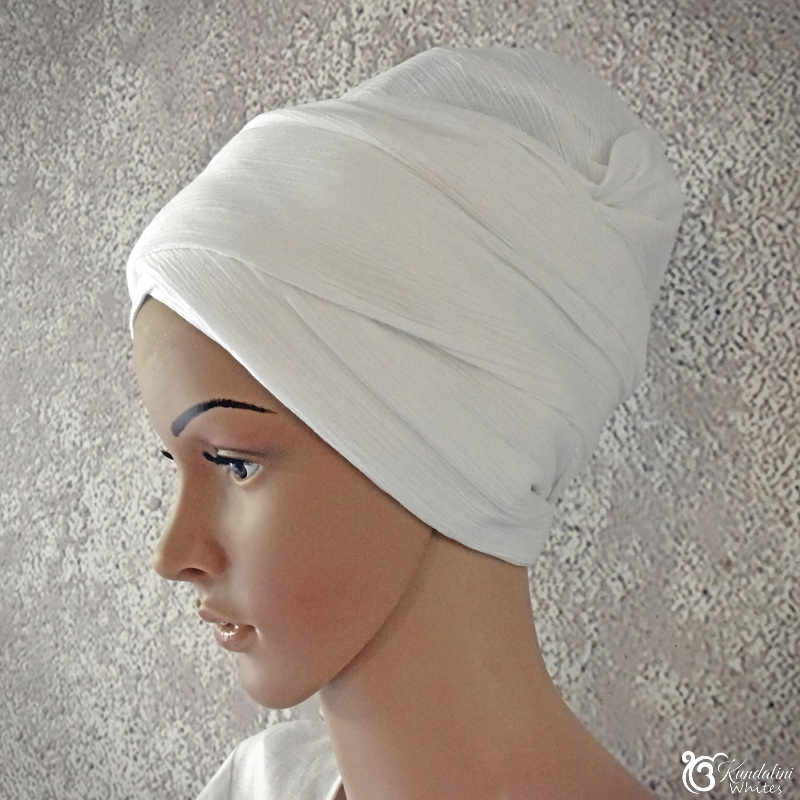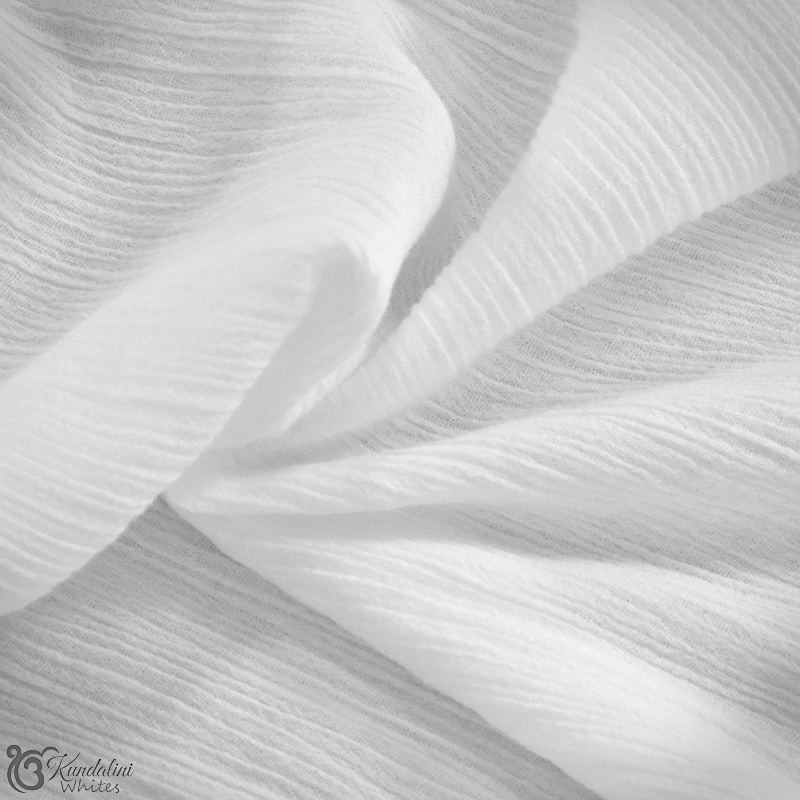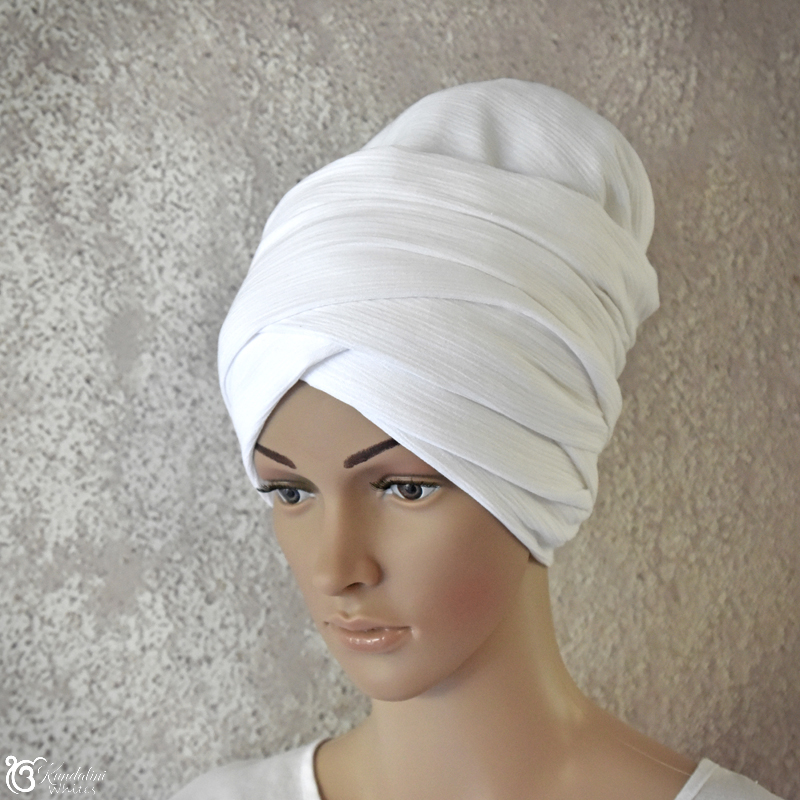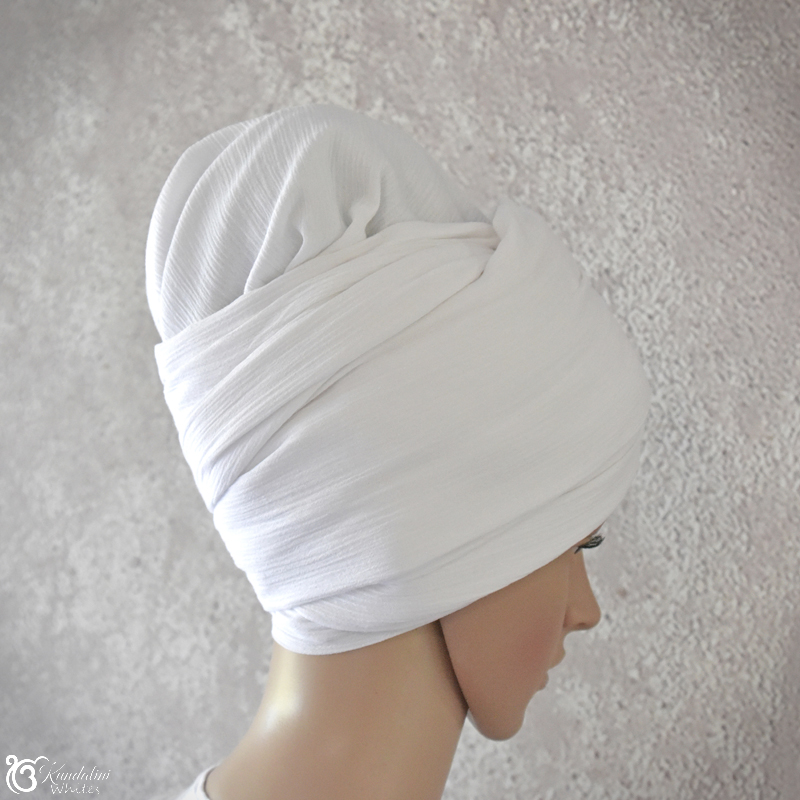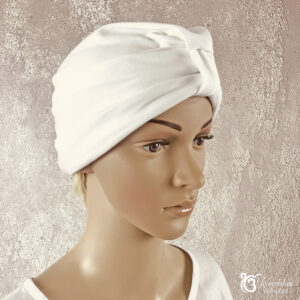Description
This fabric is rare for the purpose of turbans in India but so lovely and totally suitable for Kundalini yogis.
The material is very stretchy so it feels light. Also, the weave allows for the ‘give’ without addition of synthetic fibres.
The textured cotton kundalini turban comes hemmed for longevity and to prevent fraying in the wash.
There are dozens of ways to tie a turban. Our images are merely suggestions which primarily demonstrate the type of fabric.
The slimline option is 40cm wide and 3m long. That is absolutely plenty for a lovely turban, and not too cumbersome for a quick set. This is the most popular choice.
The mid-range option is 60cm wide and 3m long for a fuller turban.
Full Width is 1m wide and 3m long. This is for the expert turbanista, of which there aren’t many. However, we can cater for you too.
Wearing a turban during Kundalini yoga is a means of focussing and containing energy, clarifying thoughts, and creating a meditative focus at the Third Eye point. The recommendation to wear a turban comes from ancient yogic wisdom. By covering the Crown Chakra we protect the point of connection to the Infinite. https://www.3ho.org/3ho-lifestyle/daily-routine/covering-head
The turban stabilises the small flat skull bones which move ever so slightly during meditation. Hence there is a physical effect on the skull’s meridians which are a network of fine filaments. Furthermore, wearing a turban has a stabilising effect on the electromagnetic field as a whole. Together these effects have been shown to promote calm and relaxation.
The turban is therefore an important element amongst the tools for higher consciousness. It sets the stage for a deeper practice by signalling a transition from the physical to the spiritual realm. The wearing of a turban prepares the body for the joy and reverence of the yoga practice.
The colour white is the chosen hue of Kundalini yoga – for reasons of which we are all aware. https://kundaliniwhites.com.au/kundalini-yoga-wear/ However, in the case of turbans, latitude has always been encouraged, in order to allow for individuality and the state of our being at any one time. “Colours affect the bodily functions, mind and emotions. They do this with the energy produced by light. Studies conducted have demonstrated the benefits of colours on the development of the brain, creativity, productivity and learning.”
Care:
Wash on a gentle cycle, dry in shade. Ironing is optional. Once dry, fold the fabric to preferred width and store as a roll ready for wrapping.
Cultural note:
Sikhs place a great deal of importance on wearing a turban which they call ‘Dastar’. In the Khalsa society, the turban signifies many important virtues. Examples of these are equality, spirituality, honour and self-respect. Add to that piety, moral values and courage, and you can appreciate that the turban is an integral part of the Sikh identity. Wikipedia has an extensive narrative on the Sikh turban which you can read here: https://en.wikipedia.org/wiki/Dastar



